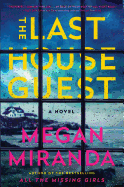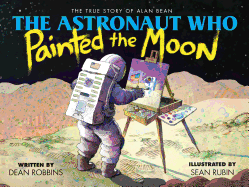 |
| photo: David Kelley |
Tim Mason's plays have been produced in New York City and around the world. He has received the Kennedy Center Award, the Hollywood Drama-Logue Award, a fellowship from the National Endowment for the Arts and a Rockefeller Foundation grant. In addition to his dramatic plays, he wrote the book for Dr. Seuss's How the Grinch Stole Christmas! The Musical, which ran for two seasons on Broadway and tours nationally every year. He is the author of the young adult novel The Last Synapsid (2009). The Darwin Affair (reviewed below), out now from Algonquin Books, is his first adult novel.
What about this history captured your imagination?
It began with Dickens, really: my love of Dickens, perhaps his best novel, Bleak House, and the character, the Detective Inspector named Bucket. I always thought, wouldn't it be fun to write something with Bucket as the lead character instead of just a member of the supporting cast? And when I found that Dickens quite likely based Inspector Bucket on a real London policeman, Charles Field, I felt at liberty to use that fellow, or my version of him, as my lead character. It began with Dickens, and with my father's love of the works of Charles Darwin.
How important, to you, is historical accuracy in fiction?
I worked very hard to be as accurate as possible, given that it's a work of fiction. I tried to insert my fiction in the interstices between one historical event and the next. I had some good luck: when I first began work on the notion of the novel back in 2009, I was having dinner with a friend, a British expatriate in New York. And she said, well, if you're doing anything Victorian, you should be in touch with my friend in London, Jane Hill. I e-mailed this perfect stranger and she, within days, was looking over my first 80 pages and correcting my Victorian. She was a great help throughout. At one point she turned over her house in north London to me while she was traveling abroad, and I used that as a base for research. I had an old friend in Oxford, an archeologist, and he and his wife were able to unlock a door for me at the University Museum, where the famous Wilberforce-Huxley debate on evolution took place. It is no longer open to the public, but I got to scope it out for myself and try to duplicate it in my book.
Also, in 2012, I think that was the year, the diaries of Queen Victoria, which had been transcribed and digitized, were briefly put online and open to the public. That was just a godsend; it was incredible. I had Queen Victoria's own day-to-day accounting of her time, and the trip with her husband, Albert, to his homeland of Coburg in Germany, including the very real, very serious carriage accident that Albert suffered where he was thrown from a carriage and injured. I saw that as a green light to my fiction. It really happened; my version of it didn't, but I squeezed my fiction onto historical fact.
Did you enjoy the research process?
I enjoyed it very much. Discovering sources like those I've mentioned, and a couple of others--I had a lot of good luck. At a certain point I feel you can't write until you shut the history book. Otherwise you'll go on forever researching and, you know, this is not a documentary; this is a work of fiction. I have to be willing to get some things wrong. I do my best to study up on the area I'm pursuing, and then I metaphorically shut the book and don't look at it while I'm writing. That's my process. Otherwise I find I'm paralyzed; I couldn't actually begin the fiction until I looked away from the history.
 What do you love so much about Bucket?
What do you love so much about Bucket?
For me the Charles Field that I made was attractive. Dickens's Bucket is also very attractive. He's probably one of the first-ever police detectives in fiction. Very adept, very sagacious. He's able to spot character on sight and come to snap judgments that prove to be accurate. I felt he also had quite a lot of moral ambiguity. He does a terrible trick to the poor character of Tom--Tom who's all alone, a miserable poverty-stricken street boy. So he's very warm and engaging, and you love him, and then he's also capable of underhanded dealing. I thought he was very human.
When I came to write my version of Inspector Field, I realized he's only superficially like Dickens's Bucket. He has certain patterns of speech that are like Bucket, and he's sort of a burly middle-aged man and he loves his wife, as Dickens's Bucket did; but he's a nicer guy. He has a terrible temper--that's his biggest failing. But I could embrace him wholeheartedly, even with his temper and his sense of his own limitations. I think that's very attractive to me. He's not the omniscient detective. He's not anything like Hercule Poirot. He's just groping in the dark and so frustrated because he feels he makes one mistake after another. That feels more like my life.
How was writing a novel for adults different from your past writing experience?
I began experimenting in prose fiction some years ago, around 2000, when a story occurred to me that simply couldn't be told on the stage. A play can span time, and travel in time theatrically, but this story wanted something different. That's how my middle school novel, The Last Synapsid, began, and that was just such a slog. I just had to write and write and overwrite. My first draft was over 450 pages long! It took me a long time. I eventually cut 100 pages before Random House bought it and published it, but it was a great education. I could do things in novel form that I can't do on the stage.
The literature of the stage is pure economy. Action is dialogue. Action isn't, he goes to the bar and makes a cocktail and returns to the dinner table. Action is what happens from one line of dialogue to the next between one character and another, constant shifting of the balance of power. That makes the dynamic of a play. Well, in a novel, you've got the reader, who isn't looking at the stage but looking into his or her own imagination, and you have to bring the stage to them. And it's a lot of work, a lot of wonderful work.
What are you working on next?
What I'm working on involves Inspector Field five years before the events of The Darwin Affair, and seven years after. Both a prequel and a sequel. But this one I don't want to take four years to write! --Julia Kastner, librarian and blogger at pagesofjulia
Tim Mason: You Have to Bring the Stage to Them
 Fisher's food writing helped establish what now is an abundant genre. Whet your appetite with Fisher's Consider the Oyster (North Point Press, $13), offering recipes and essays on the "dreadful but exciting" mollusk. You can't go wrong with her Oysters Rockefeller.
Fisher's food writing helped establish what now is an abundant genre. Whet your appetite with Fisher's Consider the Oyster (North Point Press, $13), offering recipes and essays on the "dreadful but exciting" mollusk. You can't go wrong with her Oysters Rockefeller. Then feast on How to Cook a Wolf (North Point Press, $16), first published in 1942 when rationing was becoming a daily part of the war effort for many Americans. Fisher's sparkling prose illuminates the delights of humble buttered toast, how to stomach--and enjoy--organ meat, the possibilities afforded by canned food and the American tendency to overcook vegetables. Her humor easily holds up: "Almost all vegetables are good, although there is some doubt still about parsnips." Try the Tomato Soup Cake. (Really.)
Then feast on How to Cook a Wolf (North Point Press, $16), first published in 1942 when rationing was becoming a daily part of the war effort for many Americans. Fisher's sparkling prose illuminates the delights of humble buttered toast, how to stomach--and enjoy--organ meat, the possibilities afforded by canned food and the American tendency to overcook vegetables. Her humor easily holds up: "Almost all vegetables are good, although there is some doubt still about parsnips." Try the Tomato Soup Cake. (Really.) Fisher's seminal work The Gastronomical Me (North Point Press, $16) traces the enviable highlights of her culinary life, a perfect start for a taste of her blend of sumptuous detail with measured wisdom. Recalling a childhood sundown spent with her father and sister, she writes "the three of us are in some ways even more than twenty-five years older than we were then. And still the warm round peach pie and the cool yellow cream we ate together that August night live in our hearts' palates, succulent, secret, delicious." --Katie Weed, freelance writer and reviewer
Fisher's seminal work The Gastronomical Me (North Point Press, $16) traces the enviable highlights of her culinary life, a perfect start for a taste of her blend of sumptuous detail with measured wisdom. Recalling a childhood sundown spent with her father and sister, she writes "the three of us are in some ways even more than twenty-five years older than we were then. And still the warm round peach pie and the cool yellow cream we ate together that August night live in our hearts' palates, succulent, secret, delicious." --Katie Weed, freelance writer and reviewer



 What do you love so much about Bucket?
What do you love so much about Bucket?  It's been 50 years since Eric Carle's The Very Hungry Caterpillar inched into the pantheon of picture books. This colorful tale of a collage caterpillar has since sold nearly 50 million copies worldwide, almost a copy per minute since its publication. Carle was born in 1929 to German parents in the United States. At age six, Carle's mother moved the family back to Germany, where his father was drafted into the German army at the outbreak of World War II (in 1947 he returned from Soviet captivity weighing 85 pounds). Near the end of the war, at age 15, Carle was forced to dig trenches on the Siegfried Line. In 1952, he returned to New York to work as a graphic designer, though he was drafted into the U.S. Army during the Korean War and stationed in Germany.
It's been 50 years since Eric Carle's The Very Hungry Caterpillar inched into the pantheon of picture books. This colorful tale of a collage caterpillar has since sold nearly 50 million copies worldwide, almost a copy per minute since its publication. Carle was born in 1929 to German parents in the United States. At age six, Carle's mother moved the family back to Germany, where his father was drafted into the German army at the outbreak of World War II (in 1947 he returned from Soviet captivity weighing 85 pounds). Near the end of the war, at age 15, Carle was forced to dig trenches on the Siegfried Line. In 1952, he returned to New York to work as a graphic designer, though he was drafted into the U.S. Army during the Korean War and stationed in Germany.











